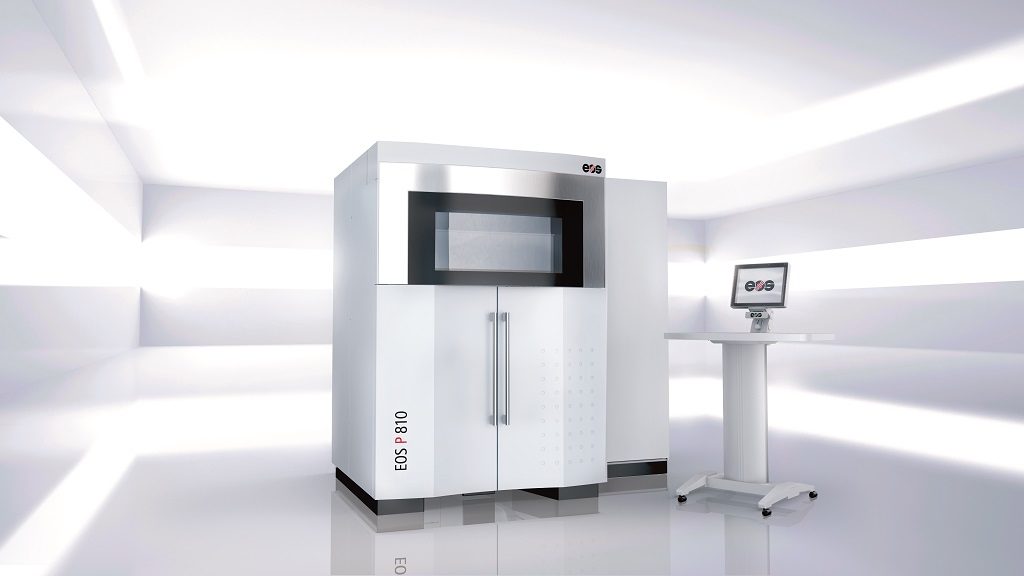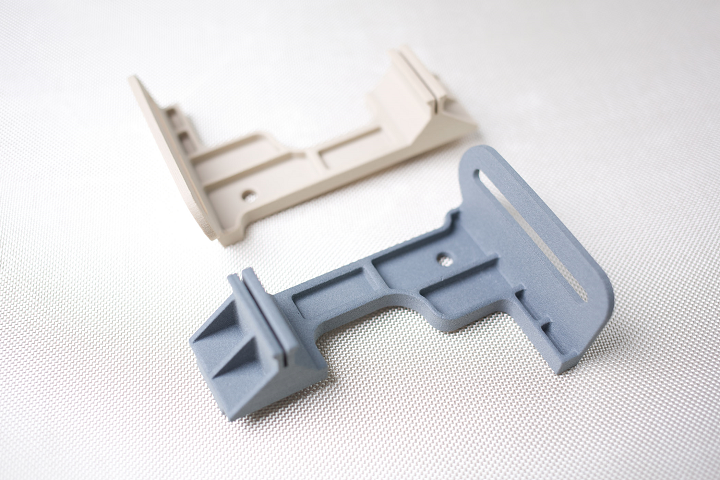Victrex and University of Exeter Commission EOS P 810 to Commercialize PAEK Materials
Back in the summer of 2018, high-performance polymer solutions provider Victrex, based in the UK, announced that it had developed new PAEK 3D printing materials. PAEK, or polyaryletherketone, is a family of high-performance thermoplastic materials that includes polyetheretherketone (PEEK) and polyether ketone ketone, PEKK and other similar materials. Victrex has over 40 years of experience specializing in high-temperature materials such as PEEK and PAEK, and focusses on these materials that have high Continuous Service Temperatures, high chemical resistance, and high strength.
These materials are expensive and difficult to process but can be used in demanding applications such as aerospace and replacing metal parts. Coupled with 3D printing, novel PAEK parts can now be made that save weight, lessen development cost and reduce part count. PAEK end-use part development is a focus area of many polymer 3D printing efforts across several industries worldwide. PEEK in and of itself has become popular and is often requested and used when other less expensive materials can suffice. The material is far from ideal. In FDM it is difficult to print parts larger than a softball and most printed parts still have issues with speccing and warpage. In sintering, unsintered powder of other polymers can usually be recycled, but with PEEK the entire build volume is either parts or waste. With the material costing between $400 and $1000 per kilo depending on the grade, this is an expensive proposition making using PEEK for production sintered parts a pipe dream for nearly all applications.
 In 2018, Victrex began collaborating with the University of Exeter, and specifically its Centre for Additive Layer Manufacturing (CALM), in order to develop next-generation PAEK polymers and composites.
In 2018, Victrex began collaborating with the University of Exeter, and specifically its Centre for Additive Layer Manufacturing (CALM), in order to develop next-generation PAEK polymers and composites.
This week, the university announced that, together with Victrex, it has finished commissioning its new EOS P 810, a laser sintering platform for high-temperature polymers like PAEK. This investment in and commissioning of the production-ready equipment, with its build volume of 700 x 380 x 380 mm, two 70-watt lasers, and the ability to print with materials that feature melting temperatures around 300°C, should help speed up the commercialization of materials for 3D printing high-performance parts.
“We can now further our research by utilizing the next generation of high temperature systems, the EOS P 810. The new equipment allows us to link the fundamental research with the commercial manufacturing process, to optimize the materials and their application, while accounting for the new thermal, optical, and mechanical upgrades and providing us with accurate insights into the detailed dynamics of laser sintering,” said Professor Oana Ghita, the lead of CALM at the University of Exeter.
CALM was actually one of the first to get the chance to commission the EOS P 810 3D printer, which was first introduced at RAPID + TCT 2018. The platform is quite well-suited for Victrex’s new low-melting-point PAEK polymers, which the company designed and optimized specifically for 3D printing purposes.
The commissioning is just one part of the continuing partnership between the university and Victrex to, as a Victrex press release states, “optimize the advantages of PAEK polymers.” In fact, the goal of their strategic arrangement is not only introduce Victrex’s next-generation PAEK composites and polymers, but also to improve the 3D printing performance at the same time.
“This is an exciting milestone in our collaboration with the University of Exeter, which we announced in 2018, creating an effective eco-system to accelerate the commercialization of AM materials for performance parts to meet customer needs,” stated Ian Smith, the Victrex Director of Innovation.
All of the time and effort that the two have invested into PAEK materials and this 3D printer is to make sure that any future demand for large-scale, high-performance parts can be easily met by the AM market. Through making PAEK family materials a reality, CALM could make an outsized impact in commercializing the technology for medical device, aerospace and other industries.
What do you think? Discuss this news and other 3D printing topics at 3DPrintBoard.com or share your thoughts in the comments below.
[Images: Victrex, unless otherwise noted]Subscribe to Our Email Newsletter
Stay up-to-date on all the latest news from the 3D printing industry and receive information and offers from third party vendors.
Print Services
You May Also Like
Will Nano Dimension Be Forced to Buy Desktop Metal? Chancery Court Says “Yes”
For the latest updates (as of March 25, 2025), see the end of this article. Desktop Metal’s future is hanging in the balance. The company, once a major player in...
Automation Alley Lays the Infrastructure for Distributed Manufacturing in Michigan and Beyond
For over 25 years, Automation Alley has been at the forefront of Michigan’s technological evolution, helping to reposition the state from its Rust Belt reputation to a modern hub of...
3D Printing News Briefs & Events Roundup: March 15, 2025
In this weekend’s combined 3D Printing News Briefs and Webinars/Events Roundup, we’re covering news about automotive and construction 3D printing, along with AM Forum, TCT Asia, the Experience Stratasys Tour,...
3D Printing Software Market to Hit $6.78B Revenues by 2033
Additive Manufacturing Research (AMR) has released a new edition of its flagship market study, “AM Software Markets 2025: Analysis, Data and Forecast,” offering deep insights into the 3D printing software...





























